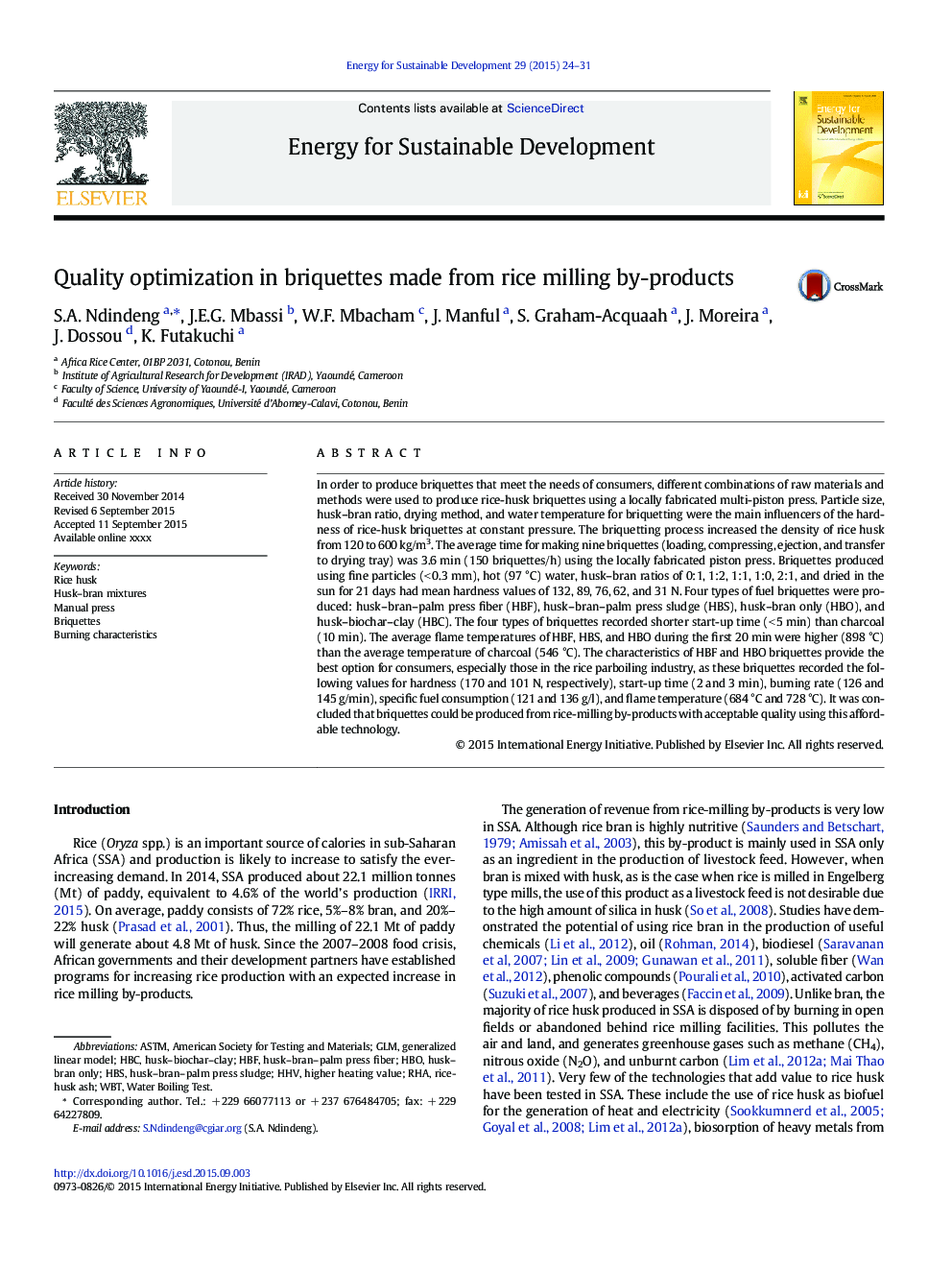| Article ID | Journal | Published Year | Pages | File Type |
|---|---|---|---|---|
| 7453846 | Energy for Sustainable Development | 2015 | 8 Pages |
Abstract
In order to produce briquettes that meet the needs of consumers, different combinations of raw materials and methods were used to produce rice-husk briquettes using a locally fabricated multi-piston press. Particle size, husk-bran ratio, drying method, and water temperature for briquetting were the main influencers of the hardness of rice-husk briquettes at constant pressure. The briquetting process increased the density of rice husk from 120 to 600 kg/m3. The average time for making nine briquettes (loading, compressing, ejection, and transfer to drying tray) was 3.6 min (150 briquettes/h) using the locally fabricated piston press. Briquettes produced using fine particles (< 0.3 mm), hot (97 °C) water, husk-bran ratios of 0:1, 1:2, 1:1, 1:0, 2:1, and dried in the sun for 21 days had mean hardness values of 132, 89, 76, 62, and 31 N. Four types of fuel briquettes were produced: husk-bran-palm press fiber (HBF), husk-bran-palm press sludge (HBS), husk-bran only (HBO), and husk-biochar-clay (HBC). The four types of briquettes recorded shorter start-up time (< 5 min) than charcoal (10 min). The average flame temperatures of HBF, HBS, and HBO during the first 20 min were higher (898 °C) than the average temperature of charcoal (546 °C). The characteristics of HBF and HBO briquettes provide the best option for consumers, especially those in the rice parboiling industry, as these briquettes recorded the following values for hardness (170 and 101 N, respectively), start-up time (2 and 3 min), burning rate (126 and 145 g/min), specific fuel consumption (121 and 136 g/l), and flame temperature (684 °C and 728 °C). It was concluded that briquettes could be produced from rice-milling by-products with acceptable quality using this affordable technology.
Keywords
Related Topics
Physical Sciences and Engineering
Energy
Energy (General)
Authors
S.A. Ndindeng, J.E.G. Mbassi, W.F. Mbacham, J. Manful, S. Graham-Acquaah, J. Moreira, J. Dossou, K. Futakuchi,
